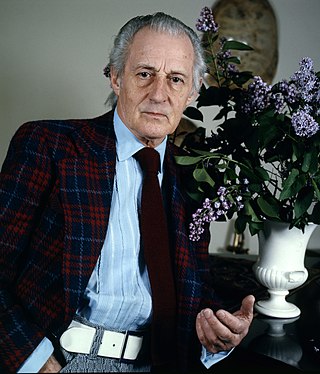History
This section needs additional citations for verification .(October 2020) |
English National Ballet was founded in 1950 as Gala Performances of Ballet by the British dance couple, Alicia Markova and Anton Dolin. [1] The Company later adopted the name Festival Ballet, then London Festival Ballet, and in June 1989, English National Ballet. [2]
Markova and Dolin were leading stars of the Ballets Russes, one of the most influential ballet companies of the 20th century. After the death of its director Serge Diaghilev in 1929, the company was disbanded and in 1931, one of its dancers, Ninette de Valois, founded the Vic-Wells Ballet Company in London, with Markova and Dolin as Principal dancers, Markova becoming Prima Ballerina in 1933. Following the success of their performances as the Markova-Dolin Company, Markova and Dolin decided to start their own company with the sole objective of touring both nationally and internationally, bringing ballet to audiences who had not previously had the opportunity to experience the art form. Markova and Dolin left the Vic-Wells Ballet in 1935.

London Festival Ballet was founded in 1950 with the financial backing of the Polish impresario Julian Braunsweg. The name was inspired by the then imminent Festival of Britain, however the company would later be renamed to today's English National Ballet. Dolin was the company's first artistic director and established the company as a touring group both nationally in the UK and Internationally, touring abroad for the first time in 1951. Dolin also introduced a number of educational programs in the early years, designed to make ballet accessible to new audiences. Dolin remained as artistic director until 1962, succeeded by John Gilpin, who was also principal dancer with the company from 1950 to 1960 and 1962 to 1971. The Company grew in size and status, undertaking extensive national and international tours, presenting a new generation of dancers—all while repeatedly facing bankruptcy. Braunsweg left in 1965 and Donald Albery took over until 1968, stabilising the budget with safer programming. Former Royal Ballet dancer Beryl Grey directed the company (now named London Festival Ballet) from 1968 to 1979, raising technical standards, touring widely and inviting prominent guest stars and choreographers including Leonide Massine and Rudolf Nureyev, who picked ballerina Eva Evdokimova to be his first Princess Aurora in his production of The Sleeping Beauty in 1975. In 1979 John Field became director of the company until 1984.
In 1984 Peter Schaufuss who had won both the Olivier and Evening Standard Awards as a dancer and for his production of La Sylphide with the company, became its director and revitalised the company. During his directorship he succeeded in changing the name to English National Ballet, founding the school, inviting princess Diana as patron and presenting many important choreographers ballets with the company for the first time such as Sir Frederick Ashton, Sir Kenneth MacMillan, Christopher Bruce, Michael Clarke, John Neumeier, George Balanchine, Alvin Ailey, Roland Petit, Maurice Bejart, and John Cranko. This period is considered by many the golden age where the company reached a new and higher level.
In 1990 Ivan Nagy became director (until 1993), Derek Deane (until 2001) and Matz Skoog (until 2006) and directed the company before Wayne Eagling, former head of Dutch National Ballet who took over in 2006. In April 2012, following the February sudden announcement of resignation by Eagling, principal dancer for The Royal Ballet Tamara Rojo was announced to become his successor at the end of the 2012 season, in August of that year. [3]
In November 2019, Prince Andrew, who had served as Patron of the English National Ballet since 2001, resigned amid the Jeffrey Epstein scandal. [4]
In January 2022, Rojo announced that she will leave the company at the end of the year to lead the San Francisco Ballet. [5] Aaron S. Watkin, who performed with the company three decades prior, took over as artistic director in August 2023, after his appointment was announced in August 2022. [6]








